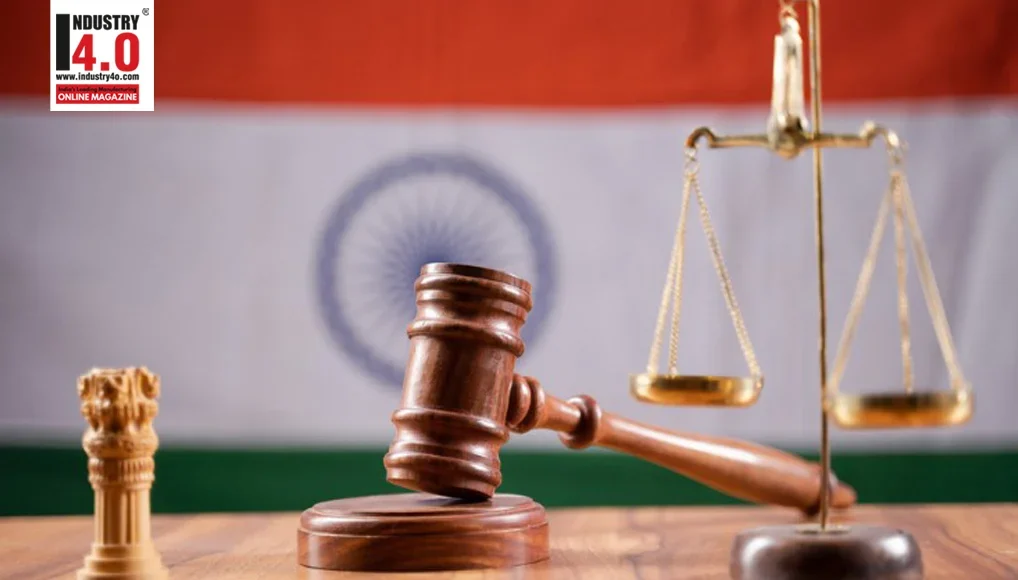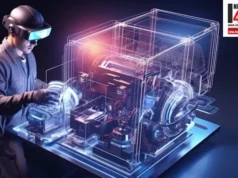Deciphering the Code : Recent Changes to Patent Amendment Rules 2024
The Ministry of Commerce and Industry, as they recently enforced significant amendments to the Patent Rules on March 15, 2024. Patents play a pivotal role in fostering innovation, safeguarding intellectual property, and driving economic growth. These amendments target enhancing efficiency in patent examination and processing, bolstering protection for intellectual property rights, and fostering innovation and competitiveness across key sectors of the economy.
Join us as we dive into the details of these amendments, exploring their impact on streamlining processes, reinforcing protection, and cultivating an environment ripe for innovation.
1. Revised timeline for request of examination:
The period to submit a request for examination in a patent application has been shortened form 48 months to 31 months from the earliest priority date. One of the primary goals is to expedite the patent examination process. India has a significant backlog of patent applications waiting for examination. Shortening the timeframe to request examination encourages applicants to move forward with the process sooner, potentially reducing the backlog and speeding up patent grant timelines. The revised timeline pushes applicants to make a more decisive choice about their patents earlier. By accelerating the patent grant process, inventors and companies can potentially secure their intellectual property rights faster. This allows them to commercialize their inventions sooner, leading to faster innovation cycles and economic benefits.
2. Updated applications:
Applicants for patent now need to provide details of respective applications two times through Form 3. The Rules has abridged the practice of submitting details of corresponding applications. The new rule necessitates the submission of details of subsequent filings of corresponding applications within 3 months from the date of issuance of the First Examination Report
3. Diminished frequency of patent working systems:
The requirement for filing statements of working patents has been reduced from annually to once in every three financial years. Therefore, this rule was amended to make the filing process easier. In case the patentee or the licensee fails to file the statement then the controller has the discretion to condone the delay or can extend the time for filing the statement for a period that may extend up to three months when a request is made in Form 4. Filing these statements can be time consuming and involve gathering data. Reducing the frequency lessens this administrative burden on patentees, allowing them to focus on core business activities. The change might encourage patentees to prioritize actual working of the invention, rather than just meeting an annual filing deadline. A less frequent statement could prompt more focused reporting on the true commercialization efforts.
Less frequent filings could potentially reduce workload at the Patent Office, allowing them to dedicate resources to other critical tasks like backlog reduction or improving examination processes.
4. Enhanced authority of controller:
The controller is now authorized to extend periods and excuse the delays for up to six months.
5. Amendments to opposition procedures:
Adjustments have been made to the time frames for submitting recommendations by an Opposition Board and the response period for applicants in both pre-grant and post-grant opposition procedures. These changes enhance efficiency and ensure a fair and balanced opposition process.
6. Extending deadline for filing response to first examination report:
Previously, the request for extending the FER response deadline was to be filed before the expiry of the six months deadline. The revised rule will now enable the applicant to file the extension report up to nine months. This gives the applicant time to file for the extension report thereby making it more effective. Previously, applicants had 6 months from the issuance of the FER to respond. The amended rules provide applicants with up to 9 months to file their response. Patent applications can be intricate, and the FER might raise complex objections. The extended deadline allows applicants and their representatives more time to thoroughly analyze the FER, gather necessary evidence, and prepare a comprehensive response that addresses all the raised concerns.With more time, applicants can potentially craft a stronger response that effectively addresses the issues identified by the Patent Office. This can lead to smoother examination processes and potentially faster patent grants.
The additional time might allow for consultations with patent attorneys or technical experts to develop the most effective response strategy.Missing the original 6-month deadline could lead to patent abandonment. The extension provides a buffer and reduces the risk of accidental loss of patent rights due to unintentional delays.
7. Renewal fee :
As per the amendment in the rules, a 10% reduction in the official fee for renewal of patent can be taken in if the official fee for a minimum period of 4 years is paid in advance in an electronic manner. This was enforced to reduce the burden on the applicants and encourage timely payments.The Indian government is actively encouraging a shift towards electronic filing for various legal and administrative processes. This discount incentivizes patent holders to use the online system for renewal, which can be faster, more convenient, and potentially reduce paperwork for both applicants and the Patent Office. E-filing streamlines the renewal process for the Patent Office. The discount can be seen as a partial offset for the costs saved by the government due to less manual processing of paper applications.
8. Patent agent exam:
The syllabus of the examination now includes both the Patent Act and Rules and the Design Act and Rules. The applicants can be tested for the knowledge on the above-mentioned Acts and rules. This ensures that the applicant is well acquainted with not just the legislation but the rules and other such important supporting legislations and rules. In some cases, designs and inventions can overlap. Understanding both design and patent laws can equip patent agents to better advise clients on protecting their intellectual property (IP) effectively. Knowing about design protection allows patent agents to develop a more comprehensive IP strategy for their clients. They can advise on whether to pursue a patent, design registration, or potentially both, depending on the specific invention or design.
9. Reduced Timeline for Filing a Request for Examination (RFE):
Reason: The shortened timeline from 48 months to 31 months from the priority date aims to accelerate the patent examination process. It encourages prompt action by applicants and streamlines the overall patenting procedure. The Indian Patent Office has a significant backlog of patent applications waiting for examination. Shortening the timeframe to request examination encourages applicants to move forward with the process sooner. This can potentially free up resources at the Patent Office to focus on actively pursued applications and reduce the overall backlog. The revised timeline pushes applicants to make a more decisive choice about their patents earlier.
10. Simplified Submission of Form 3:
The requirement to provide details of corresponding applications is now primarily consolidated in Form 3. This form is typically submitted once during the initial filing of the patent application in India. Previously, applicants might have needed to submit this information multiple times. The amended rules aim to simplify this by requiring it upfront in Form 3.
Reason: By allowing applicants to file a single updated Form 3 after receiving the First Examination Report (FER), the process becomes more efficient. This change decreases administrative burden and guarantees smoother application processing.
Introduction of ‘Certificate of Inventorship’:
Reason: The Indian patent certificate traditionally does not identify inventors. The new provision is of the aim to recognise inventors’ contributions to patented inventions. It permits inventors to be identified and acknowledged for their role in generating intellectual property.
11. Amendments in Pre-grant and Post-grant Opposition Procedures:
Reason: Adjusting the time frames for submission of recommendations by an Opposition Board and response times for applicants streamlines the opposition process. It ensures fairness and effective resolution of patent disputes. The amended rules introduce a checking mechanism for pre-grant oppositions. This means the Controller will now assess whether a prima facie case (initial evidence suggesting a reason for rejection) has been established by the opponent before initiating a full-fledged examination. This aims to prevent frivolous or unsubstantiated oppositions from delaying the grant process for valid patents. By filtering out weak oppositions early, the Patent Office can focus resources on more credible challenges. The amended rules shorten the time limit for the Examination Board to consider and submit its report on a post-grant opposition from 3 months to 2 months.This amendment aims to expedite the resolution of post-grant opposition cases, potentially reducing uncertainty for patent holders and challengers.A shorter time frame for reports could help manage the workload at the Patent Office and potentially reduce the backlog of pending opposition cases.
12. Divisional Applications for Plurality of Inventions:
Aligning with a recent Delhi High Court decision, this amendment allows divisional applications for parent applications where the complete or provisional specification discloses multiple inventions. Previously, Indian Patent Law only allowed filing divisional applications if the Controller of Patents raised an objection about the application containing multiple inventions (often during examination). This meant applicants couldn’t proactively file divisional applications based on their own judgment about the inventions disclosed in the parent application.This amendment allows applicants to strategically file divisional applications based on their own assessment of the inventions disclosed. This can lead to more focused patent protection for each invention. By dividing the application, applicants can potentially reduce the risk of the entire application being rejected due to issues related to one invention.
In conclusion, the recent amendments to the Patent Rules by the Ministry of Commerce and Industry mark a significant step forward in enhancing protection, streamlining processes, and fostering innovation in India. By making the filing process easier, improving efficiency and ensuring fairness in patent disputes, these amendments create a
conducive environment for inventors to thrive. Notably, the recognition of inventors for their contributions stimulates further innovation, driving India’s ambition to excel in global competition. With these changes, India aims to bridge gaps in previous rules, propel economic growth, and ultimately, realize its aspiration of securing a leading position on the global stage. Looking ahead, continued collaboration between stakeholders, robust enforcement of the amended rules, and sustained support for inventors and innovators will be pivotal in driving economic growth, promoting competitiveness, and achieving India’s vision of becoming a leader in innovation and technology.
About the authors :

Ms. Subathra Mylsamy BA.MA.BL.LLM (UK)
Managing Partner
A.K.Mylsamy & Associates LLP

Ms. Subathra is an experienced Partner with a demonstrated history of working in the legal services industry. Ms. Subathra is skilled in International Law, Legal Assistance,Legal
Research, and Legal Writing. Ms. Subathra has done her Master of Laws (LLM) focused in International Business law from The University of Manchester.
Brief Profile of Ms. Subathra Mylsamy :
Ms. Subathra Mylsamy can be contacted at :
About A.K.Mylsamy & Associates LLP :
A.K.Mylsamy & Associates LLP [‘AKM’], is a distinguished Full-Service Corporate Law Firm celebrating its 60th year of practice.
At AKM, we offer a comprehensive range of services encompassing Litigation, Advisory, and Transactional expertise.Evolving our services to meet the needs of our clients, we’ve pioneered in corporate law as a one stop destination covering Commercial, and Civil Law, with a keen focus on Mergers and Acquisitions, Structuring, Recoveries, Insolvency & Bankruptcy, Direct and Indirect Taxes, handled by a seasoned team of former ‘Indian Revenue Service’ officers. Additionally, we excel in Contracts, Intellectual Property Rights to Technology laws, Cyber security , Data Privacy, Energy and Sustainability laws and many more.
A.K.Mylsamy & Associates LLP is a strong foundation of quality, competency, commitment and ethics, which have translated into the firm’s exponential growth and high reputation. Our team of experts, who have enviable experience in their related fields, provides efficient and prompt delivery of legal solutions that works best for your business.
A.K.Mylsamy & Associates LLP set very high standards of professionalism for ourselves and achieve the same with a meticulous, scientific approach and a high degree of professional integrity. We seek long-term relationships with clients and provide the best comprehensive solutions.
Team A.K.Mylsamy & Associates LLP
A.K.Mylsamy & Associates LLP Partners Profile
A.K.Mylsamy & Associates LLP can be contacted at :
LinkedIn | FaceBook | YouTube | Website | Website2
A.K.Mylsamy & Associates LLP News Letters :
” The Lawtree “ is a News Letter brought out in a simple and creative manner bringing out Legal Updates for the public awareness. ” The Lawtree “ has recently Published there 100th Edition.
![]()
“QIkcee” one minute read is an exclusive Intellectual Property Newsletter.
 Disclaimer: The above Article is for educational purposes only. Opinions or points of view expressed in this article represent the view of the author.
Disclaimer: The above Article is for educational purposes only. Opinions or points of view expressed in this article represent the view of the author.
Also read Ms. Subathra Mylsamy’s earlier article :














